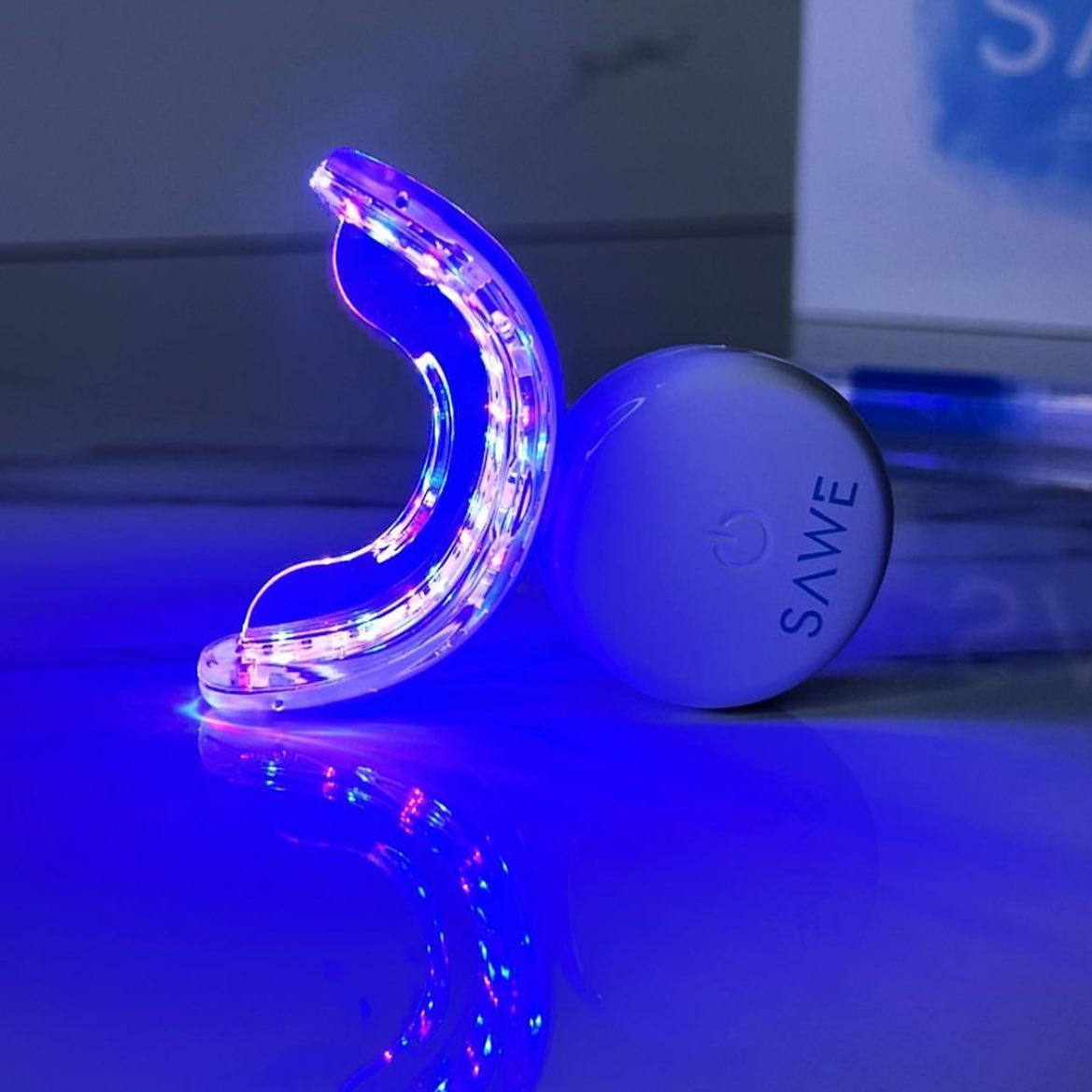Let's talk about red light therapy or RLT. You may know it as photobiomodulation, or maybe you just prefer 'light therapy', because, well, it's simpler. Here's the gist: it bathes your skin in specific natural light wavelengths, tackling various problems to keep your cells running smoothly. We're talking LEDs here, radiating red and near-infrared (NIR) light that dives deep into your skin to say "hello" to your cells.
Now, within each cell, there's a cool little thingy called a mitochondrion. With more light, it works better, getting the most out of oxygen to produce adenosine triphosphate (ATP) – your body's energy currency. Think of it as your personal in-house power plant. However, like any power plant, its performance can drop due to age, illness, or too many late-night pizza binges. And that's when things can go south, affecting organs and tissues, including your beloved teeth and gums.
The superpower of ATP? It amps up blood circulation. More blood flow means more oxygen to your cells. More oxygen means your mitochondria are living their best life, creating even more ATP. It's like the cycle of life, just for your cells.
Red light therapy also wakes up a response called hormesis. It's based on the notion that small doses of toxins can trigger beneficial reactions in our bodies. In fact, red light therapy induces a mild oxidative stress on the mitochondria, prompting the cells to kick-start their defense mechanisms. The result? Stronger cells supercharged for energy production.
Smiling With Red Light Therapy - An Oral Health Game Changer
Let's shift gears and see how RLT is a game-changer for oral health. We'll give you the rundown of some pretty legit scientific research here.
It turns out RLT is a bit of a superhero against bacteria, gingivitis, and gum disease. Take gingivitis, for example, that icky inflammation of gums caused by bacteria parties. Standard treatments do the job, but one study found RLT to be the perfect sidekick, significantly boosting effectiveness. And when RLT joins forces with conventional treatments for periodontitis (severe gum disease), the results are even better. A few studies show lower bacteria levels, making the case for RLT as a dental health MVP.
Even tooth, gum, and bone regeneration gets a boost from RLT. Some studies show it speeds up the healing process in jawbones and sockets after tooth extraction, making the wait for dental implants a bit less tedious. The results are similarly promising for kids needing pulpotomy, a procedure that removes infected pulp from underneath decaying baby teeth.
Got oral wounds or ulcers? RLT is on it, reducing pain and speeding up healing time. It's also been found to be a trusty ally against denture stomatitis (a yeast infection for denture wearers), oral lichen planus (a chronic inflammatory condition), and complications from cancer treatment. Yep, it's pretty much the Swiss Army knife of dental health. See studies here, here and here
And if you're grappling with braces, RLT might just be your new BFF. By speeding up tooth movement, Studies have shown that RLT can shorten orthodontic treatment. Less time with braces means fewer complications and quicker smiles.
No Pain, All Gain
Brace yourselves, folks! We're heading into the world of orthodontics, where the mere mention of pain can make even the bravest among us shudder. Who among us doesn't have a cringe-worthy memory of that awful soreness after a braces adjustment, or the pesky annoyance of irritated cheeks, lips, and gums? Well, we've got a superhero ready to swoop in and save the day - Red Light Therapy! According to some brilliant studies from 2015 and 2017, it seems to wield the power to diminish both that pesky spontaneous pain and the pain that hits you when chewing. Of course, we're always up for more research, but there's already a ton of data backing up red light therapy's talent for tackling all sorts of pain.
Now let's talk about root canals - the notorious villain of the dental world! But hold onto your hats, because we have some fantastic news. Red light therapy looks like it might be the new hero in town, effectively taking down postoperative pain related to this dreaded procedure. Picture this: in a 2017 study, they took 36 brave souls, splitting them into two groups. The first group got treated with post-op red light therapy, while the other group got a placebo. The result? The red light therapy crew had way less pain in the first four days after their procedure. And a 2019 review gave a big thumbs-up, concluding that red light therapy is a promising strategy to handle root canal-related pain.
And there's more! A 2018 study found red light therapy to be effective at soothing postoperative pain in patients suffering from molar pain caused by apical periodontitis (that's a pesky inflammation around the tooth's root apex). And as if that wasn't enough, a 2015 meta-analysis found that red light therapy did a fantastic job at reducing pain (and swelling too!) after molar surgery. This really is shaping up to be the superhero of the dental world!
Sensitive Teeth? We've Got You!
If you've ever winced from a cold drink or cringed at the thought of biting into ice cream, you know about tooth sensitivity. Causes range from teeth grinding to acidic foods, gum recession, and teeth whitening treatments. The good news is RLT can help.
According to a groundbreaking 2016 study, both red light and its trusty sidekick, near-infrared (NIR) light, had a dramatic effect on reducing tooth sensitivity following an in-office teeth whitening session.
Adding more weight to Red Light Therapy's superhero status, a 2019 study showed that when paired with potassium nitrate (that's the active ingredient in toothpaste for sensitive teeth, folks), red light therapy was impressively effective at numbing tooth sensitivity. The dynamic duo was even more powerful than either of them flying solo. Another 2019 study also applauded both red light therapy and potassium nitrate for their sensitivity-fighting prowess.
Lastly, let's take a look at a 2020 study. This one dove into the effects of red light therapy joining forces with a fluoride varnish to take on tooth sensitivity in patients suffering from molar-incisor hypo-mineralization (MIH) - a tooth enamel defect that often strikes kids under 10. The results? A dramatic reduction in sensitivity! The fluoride varnish played the long game, with its effects kicking in a bit later, while red light therapy swooped in for a more immediate impact.
Risk-Free Therapy
Brace yourselves for this science-backed good news: Red Light Therapy is earning quite the reputation among researchers for its wide-ranging potential benefits, and here's the cherry on top - its safety profile is remarkably clean! It's a bit like a superhero with an impeccable record.
Studies have shown no major side effects or risks linked to this treatment. It's as safe as it gets in the world of health and wellness therapies. The worst you might encounter? A hint of temporary redness in the treated area or a mild eye discomfort due to the bright lights. But, we've got you covered! With the right pair of safety goggles, you can comfortably enjoy the benefits of red light therapy without any hiccups. Science never looked this radiant, did it?










